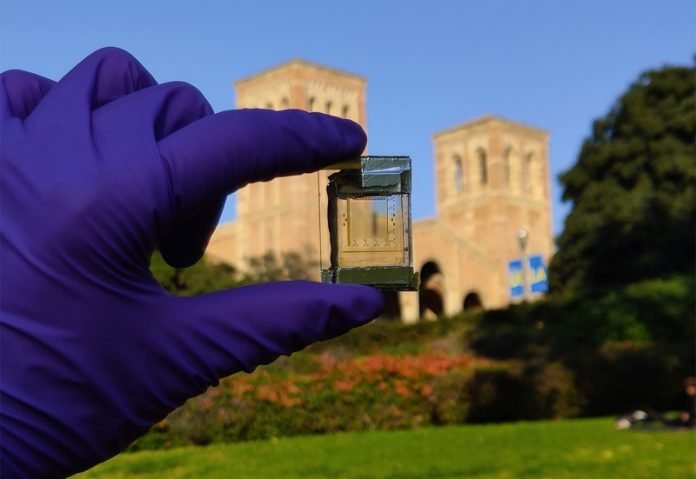
Researchers at the California NanoSystems Institute at UCLA have made a significant advancement in the field of optical computing, a technology that uses light particles, known as photons, instead of traditional electronic components.
This innovative approach promises faster and more energy-efficient processing, particularly beneficial for enhancing visual information like images and videos.
Optical computing has always faced challenges, especially in achieving nonlinear responses — a crucial capability for tasks like artificial intelligence that involve complex calculations not directly linked to the input.
Previously, achieving these responses required high-powered lasers or inefficient materials that were not suitable for practical applications.
However, the UCLA team has developed a new device that efficiently overcomes these limitations.
Their groundbreaking work was recently published in Nature Communications.
The device features a small, transparent pixel array that can produce fast and broad responses to low-power light from common sources like ambient lighting.
This capability is key for processing images directly without converting them to digital signals, speeding up the process and reducing data transfer needs.
One immediate application demonstrated by the researchers is using this technology to reduce glare in photos taken by smartphone cameras.
This example points to broader potential uses across consumer and industrial fields.
Imagine cars that have better sensors for autonomous driving, cameras that can selectively recognize or hide objects, systems that encrypt images for security, and machines that can detect defects on assembly lines more effectively.
The core of the new device is a thin film of a 2D semiconductor material, just a few atoms thick, which is transparent yet effective at controlling how light interacts with it.
This material is combined with a liquid crystal layer and an array of electrodes, creating a “smart filter” with 10,000 pixels.
Each pixel can quickly adjust its transparency in response to light, changing from clear to opaque as needed.
Professor Aydogan Ozcan, a lead researcher on the project, highlights that this technology could transform low-cost cameras into super-resolution devices capable of capturing incredibly detailed images.
This improvement in imaging technology could become widely accessible, benefitting a variety of fields and applications.
The development team includes a mix of faculty, doctoral students, and postdoctoral researchers at UCLA, who came together in a unique collaboration funded by the Elman Family Foundation Innovation Fund at the CNSI and supported by the Office of Naval Research.
This study not only showcases a significant technical achievement but also opens the door to further innovation in optical computing, with potential applications that could reshape how we interact with and process visual information in everyday technology.



